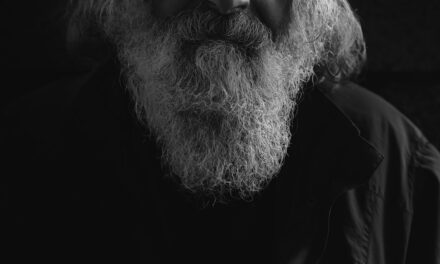Antoine Watteau was born on 10th October 1684 in the small town of Valenciennes, located in the northern part of France. His family belonged to the working class; his father was a master carpenter, and his mother was a lace maker. Growing up in a modest household, Watteau was exposed to the arts at an early age, particularly through the vibrant local culture and the influence of Flemish art, which permeated the region.
His early artistic inclinations were nurtured by his surroundings, and he began to draw and paint as a child, demonstrating a natural talent that would later flourish into a remarkable career. Watteau’s formal education in art began when he moved to Paris in 1702, where he became an apprentice to the painter Claude Gillot. Gillot was known for his theatrical and decorative style, which significantly influenced Watteau’s early works.
During this period, Watteau was introduced to the world of theatre and performance, which would later become central themes in his art. He also studied the works of prominent artists such as Nicolas Poussin and Jean-Antoine Watteau, whose styles would inform his own. The combination of his humble beginnings and rigorous training laid the foundation for Watteau’s unique artistic voice, which would soon captivate audiences across Europe.
Summary
- Watteau was born in Valenciennes, France, and received his early artistic training in his hometown.
- His style was influenced by the work of Rubens, Titian, and the Venetian school, as well as the theatricality of the Commedia dell’arte.
- Watteau’s “Fêtes Galantes” are a series of paintings depicting elegant outdoor gatherings and romantic encounters, reflecting the aristocratic leisure of the time.
- Watteau’s impact on Rococo art can be seen in his use of delicate brushwork, pastel colors, and themes of love, nature, and fantasy.
- “Pilgrimage to Cythera” is significant for its portrayal of the fleeting nature of love and the theme of romantic pursuit, which became emblematic of the Rococo style.
Style and Influences
Watteau’s style is often characterised by its delicate brushwork, soft colour palette, and an emphasis on light and atmosphere. He is best known for his ability to convey emotion and narrative through his compositions, often depicting scenes of leisure and romance. His work embodies the essence of the Rococo movement, which emerged in France during the early 18th century.
This style is marked by its ornate details, playful themes, and a focus on the pleasures of life, all of which are evident in Watteau’s paintings. The influences on Watteau’s style are manifold. His exposure to Italian Baroque art, particularly the works of Caravaggio and his followers, instilled in him a sense of drama and realism.
Additionally, the influence of Flemish painters such as Peter Paul Rubens can be seen in his use of colour and composition. However, it was the theatricality of Gillot’s work that left a lasting impression on Watteau, leading him to incorporate elements of performance into his art. This blend of influences resulted in a distinctive style that set him apart from his contemporaries and established him as a leading figure in the Rococo movement.
The Fêtes Galantes
One of Watteau’s most significant contributions to art is his development of the genre known as “fêtes galantes.” This term refers to scenes depicting elegant outdoor gatherings, often featuring aristocrats engaged in flirtation, music, and dance amidst idyllic landscapes. These compositions are characterised by their romanticism and an air of carefree enjoyment, capturing the essence of 18th-century French high society. Watteau’s fêtes galantes are not merely representations of social gatherings; they are imbued with a sense of longing and nostalgia that resonates with viewers.
Watteau’s most famous work within this genre is “Embarkation for Cythera,” painted around 1717. This masterpiece encapsulates the spirit of love and desire, portraying a group of elegantly dressed figures preparing to embark on a journey to the mythical island of Cythera, known as the birthplace of Venus, the goddess of love. The painting is rich in symbolism and emotion, inviting viewers to contemplate themes of love, beauty, and transience.
Through his fêtes galantes, Watteau not only captured the social dynamics of his time but also explored deeper human emotions, making his work timeless and universally relatable.
Watteau’s Impact on Rococo Art
Watteau’s influence on Rococo art cannot be overstated. He is often regarded as one of the pioneers of this movement, which sought to break away from the grandeur and formality of Baroque art in favour of a more intimate and playful aesthetic. His innovative approach to composition and subject matter paved the way for subsequent artists who embraced similar themes of leisure and romance.
Watteau’s ability to infuse his works with a sense of movement and spontaneity set a new standard for artistic expression during this period. Moreover, Watteau’s impact extended beyond his immediate contemporaries. Artists such as François Boucher and Jean-Honoré Fragonard drew inspiration from his work, adopting his techniques and themes while adding their own interpretations.
The emphasis on lightness, elegance, and emotional depth that characterised Watteau’s paintings became hallmarks of Rococo art as a whole. His legacy can be seen in the way later artists approached their subjects with a similar sense of playfulness and intimacy, ensuring that Watteau’s influence would resonate throughout the history of art.
The Significance of Watteau’s “Pilgrimage to Cythera”
“Pilgrimage to Cythera,” painted around 1717-1719, stands as one of Watteau’s most celebrated masterpieces and serves as a quintessential example of his artistic vision. The painting depicts a group of lovers journeying to the mythical island of Cythera, symbolising love and desire. The composition is rich with symbolism; the figures are arranged in a way that suggests both movement and intimacy, while the lush landscape envelops them in an ethereal atmosphere.
This work encapsulates not only Watteau’s technical prowess but also his ability to evoke complex emotions through visual storytelling. The significance of “Pilgrimage to Cythera” extends beyond its aesthetic appeal; it represents a turning point in art history. The painting is often seen as a bridge between the Baroque tradition and the emerging Rococo style.
It reflects the changing social dynamics of early 18th-century France, where notions of love and courtship were becoming more fluid and personal. By portraying love as an enchanting journey rather than a mere social contract, Watteau challenged conventional representations of romance in art. This shift in perspective resonated with audiences then and continues to captivate viewers today.
Watteau’s Techniques and Materials
Watteau’s mastery of technique is evident in his use of colour, light, and texture. He employed a delicate palette dominated by soft pastels and muted tones, creating an atmosphere that feels both dreamlike and intimate. His brushwork is characterised by fluidity; he often used quick strokes to capture movement and emotion within his compositions.
This technique allowed him to convey a sense of spontaneity that was particularly effective in his depictions of social gatherings. In terms of materials, Watteau primarily worked with oil paints on canvas or wood panels. He was known for his meticulous layering technique, building up colours gradually to achieve depth and luminosity in his works.
Additionally, he often used glazes to create subtle variations in tone and texture, enhancing the overall richness of his paintings. Watteau’s innovative approach to materials and techniques not only showcased his technical skill but also contributed to the emotional resonance found within his art.
Watteau’s Legacy and Influence on Later Artists
The legacy of Antoine Watteau is profound and far-reaching. His innovative approach to composition, colour, and subject matter has left an indelible mark on the trajectory of Western art. Artists who followed in his footsteps were inspired by his ability to blend realism with fantasy, creating works that resonate with emotional depth while remaining visually enchanting.
The influence of Watteau can be seen in various movements beyond Rococo, including Romanticism and Impressionism. Notable artists such as Édouard Manet and Pierre-Auguste Renoir drew inspiration from Watteau’s themes of leisure and love. Manet’s “Luncheon on the Grass” echoes Watteau’s festive gatherings while introducing modern elements that challenge traditional narratives.
Similarly, Renoir’s vibrant depictions of social interactions reflect Watteau’s influence on capturing moments of joy and intimacy. The enduring nature of Watteau’s work continues to inspire contemporary artists who seek to explore similar themes within their own unique contexts.
Watteau’s Personal Life and Relationships
Watteau’s personal life was marked by both triumphs and struggles that shaped his artistic journey. He was known for being somewhat reclusive yet deeply passionate about his craft. His relationships with fellow artists were complex; he formed connections with prominent figures such as Jean-Baptiste-Siméon Chardin and Nicolas Lancret but often preferred solitude over socialising extensively within artistic circles.
This introspective nature allowed him to focus intensely on his work but also contributed to feelings of isolation. Romantic relationships also played a significant role in Watteau’s life. He had a close relationship with actress Marguerite Gérard, who inspired some of his works; however, their romance was fraught with challenges due to societal expectations surrounding love and marriage during that era.
These personal experiences undoubtedly influenced the emotional depth found within his paintings, as he navigated themes of love, longing, and human connection throughout his career.
The Controversy Surrounding Watteau’s Work
Despite his acclaim during his lifetime, Watteau’s work was not without controversy. Some critics questioned whether his fêtes galantes were frivolous or lacked substance compared to more traditional historical or religious paintings prevalent at the time. This debate highlighted broader tensions within the art world regarding what constituted ‘serious’ art versus more decorative or playful forms of expression.
Additionally, there were discussions surrounding authenticity; some scholars have debated whether certain works attributed to Watteau were indeed created by him or by followers attempting to emulate his style after his untimely death at the age of 36. These controversies have sparked ongoing research into Watteau’s oeuvre as scholars strive to distinguish between genuine works and those produced under his influence.
Watteau’s Health and Decline
Watteau’s life was tragically cut short due to health issues that plagued him throughout much of his career. He suffered from various ailments believed to be related to tuberculosis or other respiratory conditions common during that period. These health challenges not only affected his physical well-being but also impacted his ability to work consistently.
Despite these struggles, Watteau continued to produce remarkable works until shortly before his death in 1721. His declining health forced him into periods of isolation where he focused intensely on painting as an escape from physical discomforts. This dedication speaks volumes about his passion for art; even amidst adversity, he remained committed to expressing beauty through his creations.
The Rediscovery and Appreciation of Watteau’s Work
Following Watteau’s death in 1721, there was a period during which his work fell somewhat into obscurity as tastes shifted towards neoclassicism in subsequent decades. However, by the late 19th century, there was a renewed interest in Rococo art that led to a rediscovery of Watteau’s contributions. Art historians began recognising him not only as an important figure within Rococo but also as a precursor to modern artistic movements.
Exhibitions showcasing Watteau’s masterpieces have since been held worldwide, allowing new generations to appreciate his unique vision and technical prowess. Today, he is celebrated for his ability to capture fleeting moments filled with emotion—a quality that resonates deeply with contemporary audiences seeking connection through art. The ongoing appreciation for Watteau’s work underscores its timeless relevance within the broader narrative of art history while ensuring that future generations will continue to be inspired by this remarkable artist’s legacy.
If you are interested in learning more about how to optimise your website for maximum visibility as an artist, you should check out the article SEO for Artists: Optimizing Your Website for Maximum Visibility. This article provides valuable tips and strategies for artists looking to increase their online presence and reach a wider audience. It is a great resource for artists who want to showcase their work effectively and attract more visitors to their website.



